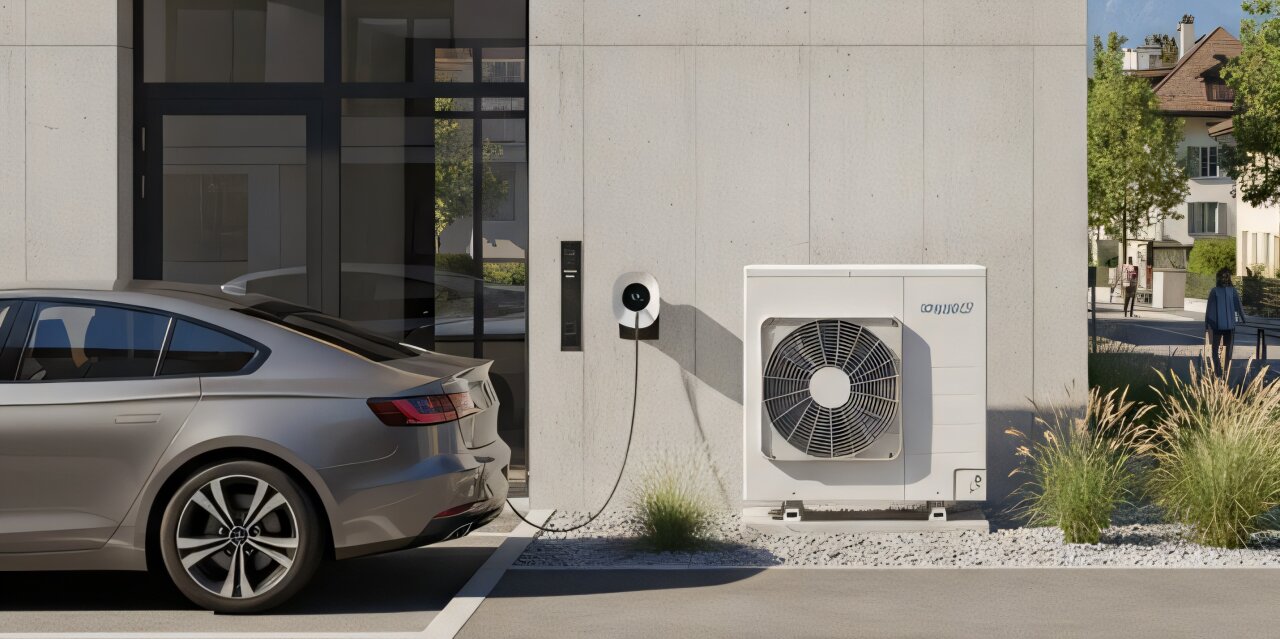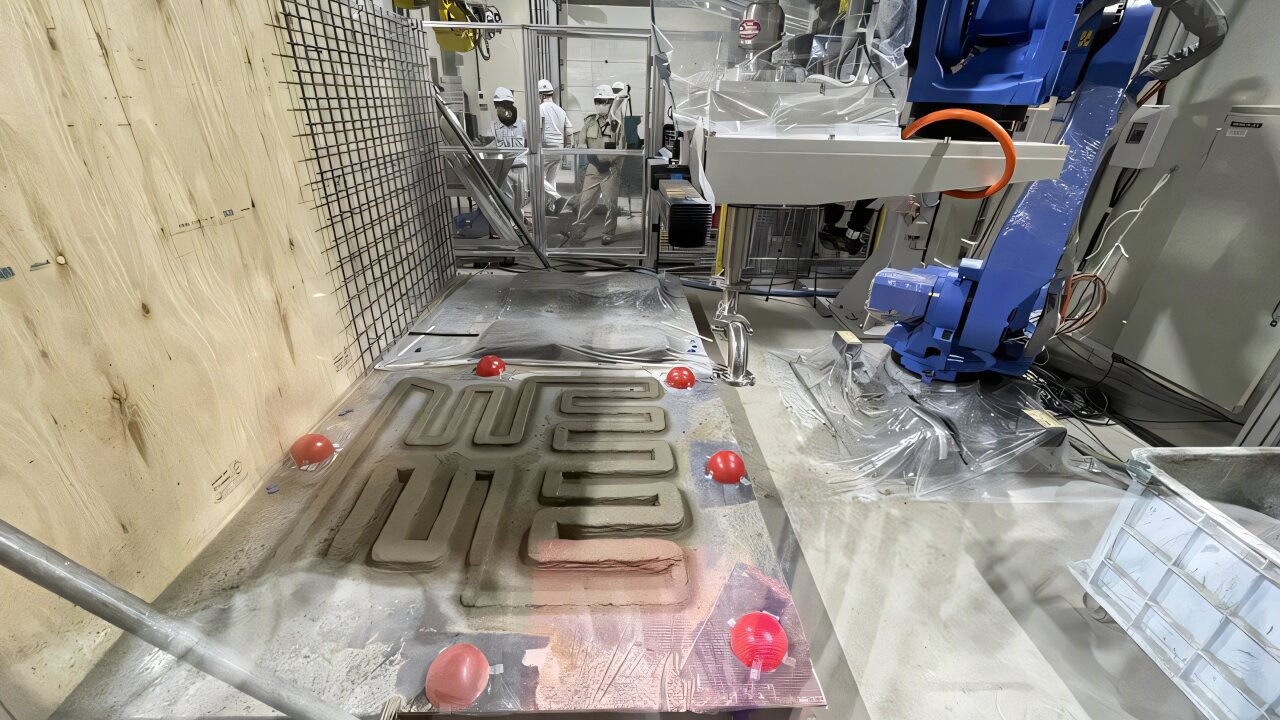Tech
The Best MagSafe Wallets to Keep Your Stuff Safely in One Place

Other Good MagSafe Wallets
ESR Magnetic Wallet HaloLock With Find My for $40: Like Apple’s MagSafe wallet, this one has Find My support. You can use the flap on the back as a grip and fit two cards easily. It does require recharging with a proprietary cable, which is annoying, though it didn’t lose much battery life after six months. Too bad I’ve already lost the cable.
OtterBox Symmetry Series Cactus Leather MagSafe Wallet for $45: It’s nice and simple, thin, lightweight, has a strong hold on my phone case, and offers a dedicated fabric-covered slot at the bottom to push the cards out (I was able to fit three without much trouble). This OtterBox wallet is made from cactus-based leather, which feels nearly as luxurious as real leather. Just know that cactus leather isn’t as eco-friendly as it’s made out to be—these cases are still infused with layers of plastics.
Apple FineWoven MagSafe Case for $50: Any time the wallet is separated from your iPhone, you’ll get an alert and can track it in Apple’s Find My app. It has a single slot that can fit up to three cards, but to take the cards out, you have to remove it from your iPhone and push the cards up via the slot on the back. Unfortunately, Apple’s MagSafe wallets exclusively use the company’s proprietary FineWoven material (made of recycled materials). It’s a commendable effort to reduce reliance on leather production, but several WIRED reviewers have said the material doesn’t hold up all that well after some time.
Bluebonnet Minimalist Full-Grain Leather MagSafe Wallet Card Holder for $68: Bluebonnet’s wallet is thin, even with cards inside, and also comes with an elastic grip you can put your fingers through to hold the phone more securely. The magnets are stronger than those in other wallets I’ve tested, though the bottom moves a bit when using the grip. Bluebonnet claims it can fit up to three cards, but I’ve been able to fit only two (my license and debit card). It’s a struggle to insert or remove more than that.
Avoid This Wallet
Ohsnap! Snap Grip Wallet for $100: I had high hopes for this one, mainly because of its build quality. The wallet is aluminum, can hold up to eight cards (depending on whether they’re lettered or not), has MagSafe support, and comes with a grip that doubles as a kickstand. Unfortunately, the grip is made of plastic, and it broke after a short time (it won’t fold properly back into place). The magnetic hold isn’t as strong as other MagSafe wallets, even with a MagSafe-approved case on my phone. None of that is great, especially at this high price.
Benks 600D MagSafe Wallet with Stand for $33: The Benks 600D MagSafe wallet might be made with Kelvar, but it sure doesn’t feel like it. The inside shell of the wallet is made with plastic, and after just a day of use, I spotted a crack in that plastic right next to the hinge. Worse, I tried to apply a bit of pressure to see if the hinge would still hold up, which completely warped the MagSafe ring. Even without clear durability problems, this wallet wouldn’t make the top of the list. It’s reasonably priced at $30 and comes in a handful of attractive colors, but it’s limited to just three cards, and there’s no easy way to get them out.
Power up with unlimited access to WIRED. Get best-in-class reporting and exclusive subscriber content that’s too important to ignore. Subscribe Today.
Tech
How electric cars and heat pumps can help Switzerland implement its energy strategy

In the future, flexibly operated heat pumps and electric cars could reduce both electricity imports and electricity prices. That is according to a new study by a Swiss research consortium led by ETH Zurich.
Electric cars and heat pumps could play a major role when it comes to implementing the Swiss Energy Strategy. The Federal Council is aiming for Switzerland’s energy supply to be carbon-neutral by 2050. The plan is for heat pumps to replace oil and gas-fired heating systems and for electric cars to gradually replace combustion vehicles. This will result in a significant increase in demand for electricity—from around 56 terawatt-hours (TWh) a year today to around 75 TWh a year by 2050.
A new report by the Swiss “PATHFNDR” research consortium, which is part of the “SWEET” program, has now shown that, alongside hydropower, heat pumps and electric cars could be key providers of flexibility for the Swiss power system in 2050.
Christian Schaffner, Director of the Energy Science Center at ETH Zurich and Deputy Director of the project, explains, “The two technologies serve to better coordinate rising electricity consumption with electricity production from renewable energy sources. This relieves the burden on the power grid, reduces imports and brings down wholesale electricity prices—particularly in the winter months.”
Only consume if the grid is not at full capacity
This flexibility is apparent on an everyday basis. For example, at outdoor temperatures of 0°C, intelligently controlled heat pumps can switch off for up to 10 hours in buildings meeting the Minergie standard without a noticeable drop in room temperature. This helps to avoid having too many heat pumps running at the same time and overloading the grid.
Electric cars, too, are often connected to the grid for much longer than is necessary for a full charge—for example if they are plugged in to charge in the garage at the end of the working day. This allows for an optimum charging pattern that is in line with electricity supply. The study claims that the best thing would be to charge the car at work: “During the day, when the sun is shining, many vehicles are parked anyway. Charging them there would make optimum use of photovoltaic production,” explains Siobhan Powell, an energy researcher at ETH Zurich and one of the main authors of the study.
More electricity, less electricity imports
By 2050, Switzerland wants to cover 50 to 60% of its electricity demand (45 TWh per year) with new renewable energy sources such as photovoltaics, wind energy or biomass. The researchers’ model calculations now show that this target will be easier to reach thanks to the flexible power consumption of heat pumps and electric vehicles.
If heat pumps and electric cars are coordinated and controlled flexibly on a nationwide basis, around 4% more renewable electricity could be available in Switzerland in 2050. “Most of this is solar power in spring and summer, which would be utilized more efficiently so that it does not need to be curtailed,” explains Powell.
Moreover, flexible heat pumps and electric cars could reduce net electricity imports by around 20% across the whole year, particularly due to higher net exports in spring and summer. “These amount to some 1.8 TWh of electricity, which is equivalent to the annual consumption of around 0.5 million Swiss households,” says Powell. According to the study, Switzerland’s electricity imports would also be reduced by around 0.7 TWh in the winter months. That corresponds to a 4.4% reduction in net imports in winter compared to an energy system without flexibly operated heat pumps and electric cars.
Cheaper electricity and fewer gas power stations
In addition, the study shows that wholesale electricity prices could also be lower due to a more even distribution of supply and demand with the help of flexible heat pumps and electric cars. This reduction in electricity prices is greatest in the winter months of January to March, when wholesale prices could be reduced by up to 6%.
The researchers also estimate that an electricity system supported by flexible heat pumps and electric cars could be operated with around 4% lower costs than a system without these two flexibility providers.
Moreover, the use of flexibly operated heat pumps and electric cars would also mean the construction of fewer gas power stations and battery storage systems by 2050. Estimates show that the necessary investment in gas power stations and batteries would fall by around a third. “Above all, gas power stations and batteries are necessary to compensate for peaks in electricity demand. If electric vehicles and heat pumps take over this function, we’ll need fewer of them,” explains Powell.
Flexibility yes, but also convenience
According to a representative survey carried out as part of the study, about 70% of the Swiss population is willing to contribute to grid stability through flexible heating and charging, provided their convenience is not impacted and operation is automatic. About 30% of respondents even said they would accept minor inconveniences if this would bring down their electricity costs.
Lower peak loads in neighborhoods and reduced grid expansion
If a large number of households are charging their cars or running their heat pumps at the same time, there is a risk of bottlenecks in the distribution grid. Many of today’s power cables and transformers are not designed for these loads and would need to be reinforced.
The researchers analyzed about 50 grid areas in Switzerland and concluded that flexibly operated heat pumps and electric cars would reduce peak loads in neighborhoods and could therefore delay and reduce the need for expensive reinforcement work on distribution grids. The actual size of these effects also depends on whether the areas in question are urban or rural.
Electricity tariffs that reward citizens
So that electrical vehicles and heat pumps can actually act as flexibility providers by 2050, they must be equipped with the necessary control and communication technology. At present, this is not the case across the board. The authors of the study therefore recommend that further systems only be subsidized if they allow flexible and intelligent operation.
In addition, the operators of electric vehicles and heat pumps should be incentivized to change their heating and charging behavior. To this end, the study recommends measures including dynamic electricity tariffs that reward flexible charging and heating. However, significant local differences in tariffs and feed-in payments would hinder this measure’s implementation in Switzerland, states the study.
The researchers also point out that the promotional instruments in Switzerland are very heterogeneous and that there is, as yet, no national “right to charge” for tenants with electric vehicles—something they say ought to be resolved quickly.
More information:
Flexibility provision from electromobility and buildings – Synthesis Report (2025). DOI: 10.3929/ethz-c-000787060
Citation:
How electric cars and heat pumps can help Switzerland implement its energy strategy (2025, November 11)
retrieved 11 November 2025
from https://techxplore.com/news/2025-11-electric-cars-switzerland-energy-strategy.html
This document is subject to copyright. Apart from any fair dealing for the purpose of private study or research, no
part may be reproduced without the written permission. The content is provided for information purposes only.
Tech
New algorithm enhances Doppler resolution of unmanned vehicle radars

A research team has developed an extrapolation-based Doppler resolution enhancement algorithm for frequency modulated continuous wave radars. The algorithm improves system performance, offering an advancement that is superior to existing ultra-high-resolution technologies.
The findings are published in the Journal of Electrical Engineering & Technology. The team was led by Sang-dong Kim and Bong-seok Kim, affiliated with the DGIST Division of Mobility Technology, in collaboration with a team led by Professor Youngdoo Choi, affiliated with the Republic of Korea Naval Academy (ROKNA).
Improving radar accuracy without extra hardware
This research introduces a technology that improves radar detection accuracy without the need for additional complex computations or hardware. The technology is expected to contribute to enhancing radar system performance on various intelligent unmanned platforms such as unmanned aerial vehicles (UAVs), unmanned ships, and autonomous vehicles.
Conventional radar systems analyze the Doppler effect to determine the velocity of a target, but the fast Fourier transform (FFT)-based approach has limitations regarding resolution (i.e., the accuracy of velocity discrimination). To address this, the joint DGIST–ROKNA research team applied a signal extrapolation technique and has proposed a new algorithm that enhances Doppler resolution without extending observation time.
Performance gains and real-world applications
The proposed method successfully reduces the root mean square error of velocity estimation by up to 33% and decreases the target miss rate by up to 68%, representing a substantial improvement over the conventional approach. Notably, the proposed method maintains the same computational complexity level as the conventional FFT method, thereby simultaneously achieving fast processing speed and high efficiency.
This technology can effectively solve the problem of signal overlap between targets moving at similar velocities, particularly when UAVs or radar systems detect multiple objects simultaneously. It can therefore greatly enhance the ability to distinguish closely spaced targets and improve detection accuracy, marking a new milestone in the advancement of high-resolution target detection technology.
Additionally, the technology is highly regarded for its industrial applicability because it requires no additional hardware resources and features a simple computational structure that enables real-time implementation.
Sang-dong Kim, principal researcher at the Division of Mobility Technology (concurrently serving the interdisciplinary engineering major), said, “This study demonstrates an improvement in both the efficiency and precision of radar signal processing, enabling more accurate target detection without the need for additional equipment. It is expected to evolve into a key technology for defense, autonomous driving, and unmanned systems.”
More information:
Youngdoo Choi et al, Doppler Resolution Enhancement Algorithm Based on Extrapolation for FMCW Radar, Journal of Electrical Engineering & Technology (2025). DOI: 10.1007/s42835-025-02453-6
Citation:
New algorithm enhances Doppler resolution of unmanned vehicle radars (2025, November 11)
retrieved 11 November 2025
from https://techxplore.com/news/2025-11-algorithm-doppler-resolution-unmanned-vehicle.html
This document is subject to copyright. Apart from any fair dealing for the purpose of private study or research, no
part may be reproduced without the written permission. The content is provided for information purposes only.
Tech
Spray 3D concrete printing simulator boosts strength and design

Concrete 3D printing reduces both time and cost by eliminating traditional formwork, the temporary mold for casting. Yet most of today’s systems rely on extrusion-based methods, which deposit material very close to a nozzle layer by layer. This makes it impossible to print around reinforcement bars (rebars) without risk of collision, limiting both design flexibility and structural integrity of builds.
Kenji Shimada and researchers in his Carnegie Mellon University’s Computational Engineering and Robotics Laboratory (CERLAB), are breaking through that limitation with a new simulation tool for spray-based concrete 3D printing.
“Spray-based concrete 3D printing is a new process with complicated physical phenomena,” said Shimada, a professor of mechanical engineering. “In this method, a modified shotcrete mixture is sprayed from a nozzle to build up on a surface, even around rebar.”
The ability to print freely around reinforcement is especially important in places like Japan and California, where earthquakes are an imminent threat and structural strength is critical.
“To make this technology viable, we must be able to predict exactly how the concrete will spray and dry into the final shape,” Shimada explained. “That’s why we developed a simulator for concrete spray 3D printing.”
The new simulator can model the viscoelastic behaviors of shotcrete mixtures, including drip, particle rebound, spread, and solidification time. This way, contractors can assess multiple printing paths based on a CAD design with the simulator to evaluate whether spray 3D printing is a feasible fabrication technique for their structure.
The team traveled to Tokyo, Japan, where Shimizu Corporation already operates spray 3D printing robots to validate their model. In the first test, the team focused on the simulator’s ability to predict shape based on the speed of the nozzle’s movement. With 90.75% accuracy, the simulator could predict the height of the sprayed concrete. The second test showed that the simulator could predict printing over rebar with 92.3% and 97.9% accuracy for width and thickness, respectively.
According to Soji Yamakawa, a research scientist in Shimada’s lab and the lead author of the team’s research paper published in IEEE Robotics and Automation Letters, a simulation of this kind would typically take hours, if not days, to run.
“By making wild assumptions, we were able to successfully simplify a super complex physics simulation into a combination of efficient algorithms and data structures and still achieved highly realistic output,” Yamakawa said.
Future work will aim to increase accuracy by identifying environmental parameters like humidity, optimizing performance, and adding plastering simulation to create smoother finished products.
“There are still so many applications and technologies that we can develop with robotics,” said Kyshalee Vazquez-Santiago, a co-author of the paper and a mechanical engineering Ph.D. candidate leading the Mobile Manipulators research group within CERLAB.
“Even in concrete 3D printing, we are working with an entirely new type of application and approach that has so many advantages but leaves so much room for further development.”
More information:
Soji Yamakawa et al, Concrete Spray 3D Printing Simulator for Nozzle Trajectory Planning, IEEE Robotics and Automation Letters (2025). DOI: 10.1109/lra.2025.3615038
Citation:
Spray 3D concrete printing simulator boosts strength and design (2025, November 11)
retrieved 11 November 2025
from https://techxplore.com/news/2025-11-spray-3d-concrete-simulator-boosts.html
This document is subject to copyright. Apart from any fair dealing for the purpose of private study or research, no
part may be reproduced without the written permission. The content is provided for information purposes only.
-

 Tech1 week ago
Tech1 week agoCISOs in court: Balancing cyber resilience and legal accountability | Computer Weekly
-

 Fashion1 week ago
Fashion1 week agoCoach reconnects with Bank & Vogue for upcycled bags using corduroy
-

 Business1 week ago
Business1 week agoFirst new Amazon electric heavy goods vehicles hit UK roads
-

 Tech1 week ago
Tech1 week agoThe Security Interviews: Colin Mahony, CEO, Recorded Future | Computer Weekly
-

 Fashion1 week ago
Fashion1 week agoGermany’s Adidas achieves highest-ever quarterly sales in Q3 2025
-

 Sports1 week ago
Sports1 week agoSources: QB Daniels dislocated elbow in loss
-

 Business1 week ago
Business1 week agoHow To Claim Investments Of Deceased Holders: A Step-By-Step Guide For Mutual Funds & Bank Accounts
-

 Business1 week ago
Business1 week agoRail security to be reviewed after train stabbings, says minister


















